Fabric8Labs has some ultra-exciting technology. I actually showed them in a liquid cooling server training I did a few weeks ago between filming a September 2023 STH YouTube video in California on server liquid cooling. This is a crazy cool technology that can offer up to 35% better cooling performance inside liquid cooling cold plates. The gyroid shapes being 3D printed in well over 99% copper are so advanced they cannot be CNC machined nor 3D printed using traditional copper additive manufacturing. Fabric8Labs has a list of hyper-scale companies looking at this technology since it offers better cooling performance than relatively simple designs used today.
Please excuse typos, this is being written live during the last presentation at Hot Chips 2023 and it has been a long day.
Fabric8Labs 3D Printed Copper Coldplates for Liquid Cooling
Liquid cooling costs more to implement than air cooling. As a result, there is a lot of research going into maximizing the investment when doing the conversion.
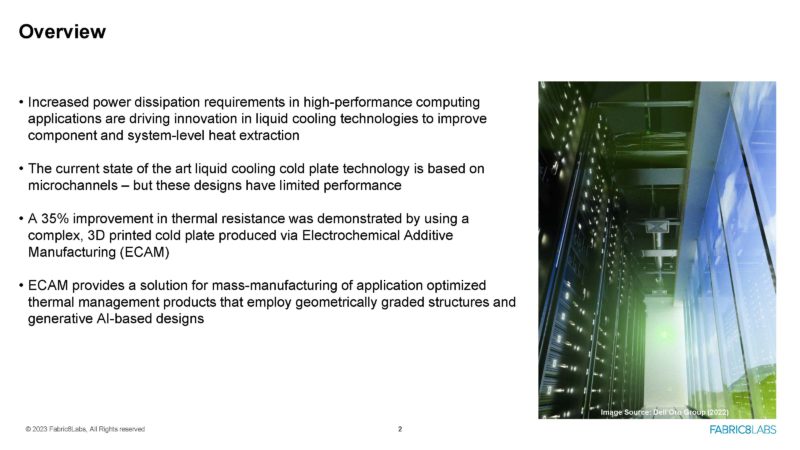
Fabric8Labs says that thermal management can drive 40% of data center power consumption and that chips are only getting hotter.
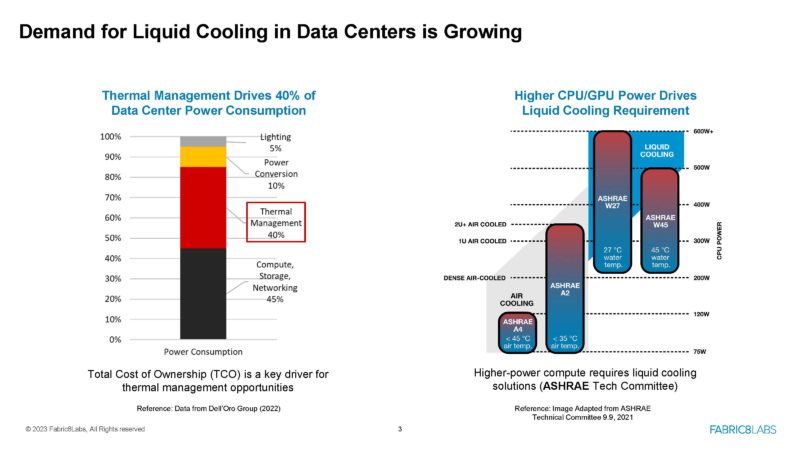
The primary method to remove heat efficiently for a data center is using a cold plate now that 2-Phase Immersion Cooling Halted Over Multi-Billion Dollar Health Hazard Lawsuits. Since we are now using cold plates for liquid cooling, most use microchannels with 100-micron fins.
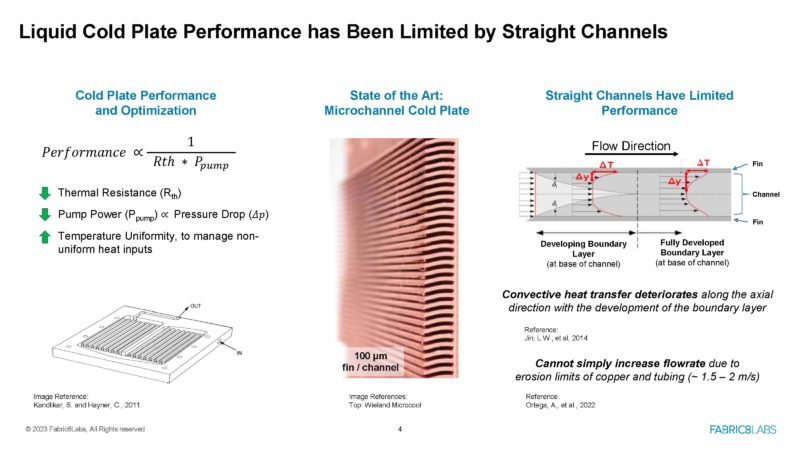
Metal additive manufacturing that can make these types of designs generally costs more than straight microchannels.

The traditional additive manufacturing method for printing more complex designs uses powders that then need to be removed before use. Fabric8Labs says using its electrochemical additive manufacturing, one does not use powders so it can be used in cooling solutions like these.

Using additive manufacturing, more complex shapes can be printed than simple fins. That even includes microchannels.

The Fabric8Labs technology uses electrodeposition for lower-cost additive manufacturing than traditional methods and at a higher resolution.

Parts are printed by being pulled from the top and then 30 micron voxel-sized copper bits are added.

The basic concept here is that these copper coolers can be made in new shapes and at more reasonable costs.

The copper from these heatsinks can be bonded to other metals.

Once one can print higher-resolution structures, then the question is what to make. Fins are good, but there are other options. Some examples are gyroid structures. The company has been making different types of structures to test the performance.

Here are two ECAM printed designs one with 50% open volume and one with 80% open volume.

If you have ever 3D printed anything, you may have noticed that there is a variance between what was expected and what is actually printed. Here is how close the 50% open and 80% open designs printed to what they expected.

This is close to expectations.
Here is the test setup being used to check the actual flow rates and thermal performance of the parts.
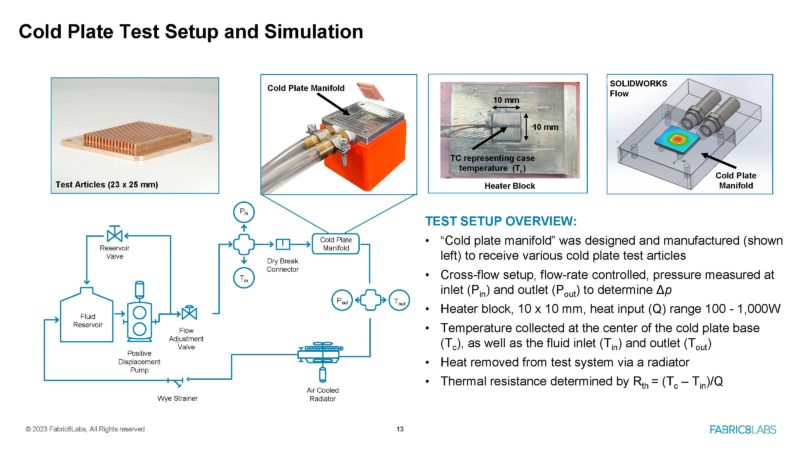
The 80% was not too interesting, since it was fairly close to the microchannel design. However, the 50% gyroid showed much better performance, to the tune of 35%.

There is another version combining the 80% and 50% structures. These can be graded based on the flow in the system or hot spots on the chip.

To give some context about why this is exciting, think about new chips that are not just one small concentrated die generating heat consistently. Structures can be printed to increase cooling or flow rate around specific parts of the package. They can also be bonded to other metal layers during the manufacturing process.

Liquid cooling requires new thermal solutions and this is one of them.

This was a presentation that was last to go in the conference, but people perked up for.
Final Words
More efficient liquid cooling cold plates can help increase performance and lower costs of cooling, especially next-generation chips. We are getting close to 500W TDP CPUs, a figure we expect to be the goal for a period of time. On the AI accelerator side, we are already seeing designs for 1kW per socket accelerators. Combined, two CPUs, eight accelerators, plus networking and memory will mean >10kW per node systems. Liquid cooling will be required.
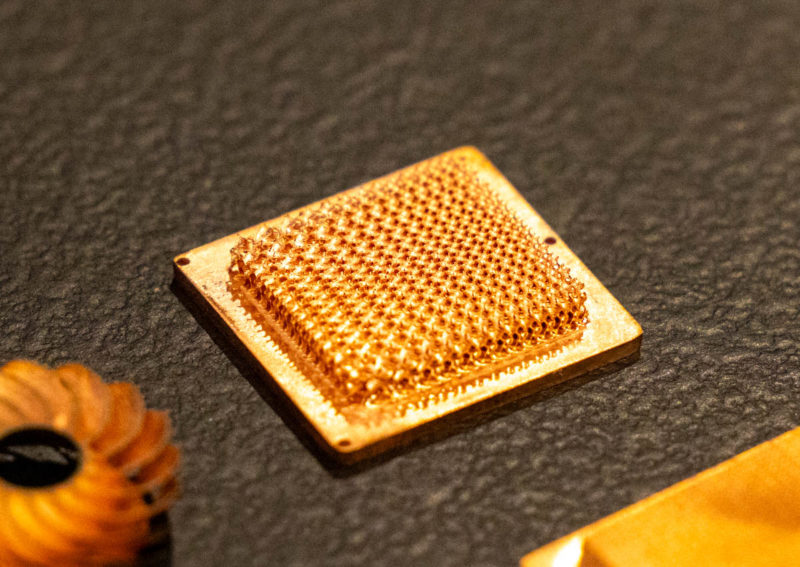
If you were wondering how fast this prints, the current process prints at about 1-2mm per hour vertically and 3-4mm is a normal cooler design. This process uses copper, and a question was raised about aluminum. Aluminum would use a molten salt, which is harder to do so it is not in the near term.
Currently, the company is in R&D phase. They are looking to build a pilot facility in early 2024 in San Diego but would be willing to co-locate factories if it was for a large customer.
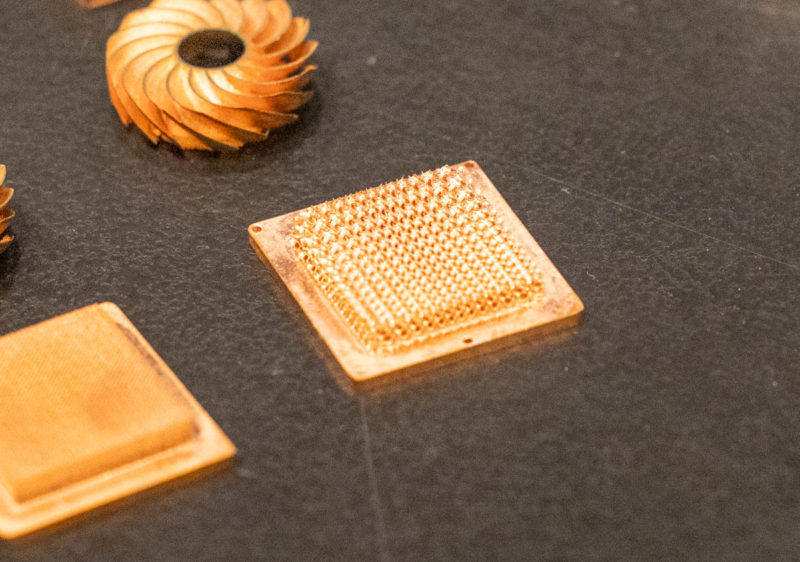
Now the part that is not on the slides. The Fabric8Labs presentation wrapped up around 6:15 after Q&A. I ended up walking out of the auditorium just before 7PM. When I walked out, the two Fabric8Labs representatives were still working through the mobs of folks at Hot Chips looking to exchange business cards.
Let me put it this way. If STH made servers, this is something I would be looking at implementing for the liquid-cooled lines, and I am in the middle of filming liquid-cooling videos that will go live in September and October. If you are a STH reader and are looking at liquid cooling servers, these are folks I would call. If you need a connection, shoot me a note and I can get their contact information for you.





These guys are talking out of both sides of their mouths. On the one hand they are trying to woo investors by saying “hyperscalers” and then on the next slide they are saying that thermal management takes half the power in a datacenter when of course it does not. In the big leagues it is more like 8%.